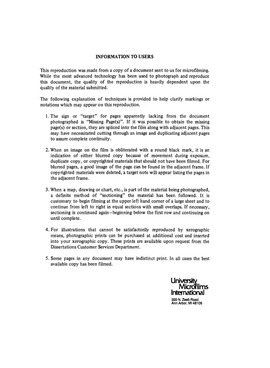| dc.contributor.author | Recker, Doren A., | en_US |
| dc.date.accessioned | 2013-08-16T12:28:59Z | |
| dc.date.available | 2013-08-16T12:28:59Z | |
| dc.date.issued | 1983 | en_US |
| dc.identifier.uri | https://hdl.handle.net/11244/5179 | |
| dc.description.abstract | Chapter I describes diachronic realism and shows why it is a version of what is called 'metaphysical realism'. Consequently, I argue that recent claims that 'metaphysical realism' is incoherent are unfounded. Chapter II argues that certain anti-realist positions (those based on 'incommensurability arguments') involve an insufficient treatment of 'meaning' and 'reference' for theoretical terms. I review much of the current work on theories of reference and show that these incommensurability positions are bankrupt given either of the two most promising theories of reference. Chapter III argues that certain methodological factors ('scientific virtues') are the main considerations in historical cases of theory choice, and can warrant rational belief in a theory if it has achieved a sufficient level of virtues. Chapter IV defends the intuition that a realist interpretation of scientific theories explains their success by expanding the concepts of 'truth' and 'approximate truth'. I introduce the notions of truthlikeness and being on the right track to distinguish theories that were at least partially theoretically correct (though they failed to refer), from theories that were only successful in that they correctly organized experimental data. I use these notions with my diachronic approach to analyze two important historical examples. | en_US |
| dc.description.abstract | While there are many versions of scientific realism, most share the intuition that the remarkable success of some scientific theories is best explained by interpreting their theoretical claims as 'true' or 'approximately true'. Due to a variety of recent anti-realist objections, this intuition must be amended so that realist positions can remain conceptually and historically adequate. This dissertation defends a version of scientific realism, which I call diachronic realism, and includes these amendments. | en_US |
| dc.format.extent | iii, 335 leaves ; | en_US |
| dc.subject | Philosophy. | en_US |
| dc.title | Scientific virtues : | en_US |
| dc.type | Thesis | en_US |
| dc.thesis.degree | Ph.D. | en_US |
| dc.thesis.degreeDiscipline | Department of Philosophy | en_US |
| dc.note | Source: Dissertation Abstracts International, Volume: 44-11, Section: A, page: 3401. | en_US |
| ou.identifier | (UMI)AAI8403977 | en_US |
| ou.group | College of Arts and Sciences::Department of Philosophy | |
